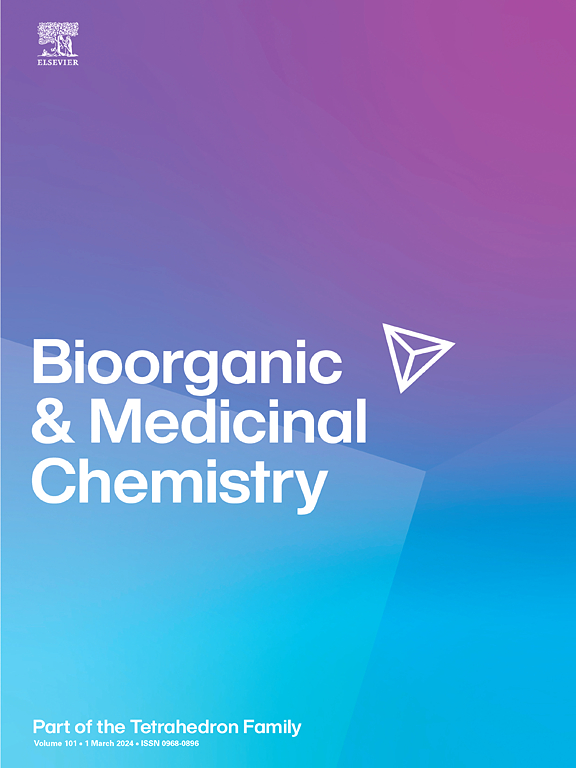Design, synthesis and in vitro validation of bivalent binders of SARS-CoV-2 spike protein: Obeticholic, betulinic and glycyrrhetinic acids as building blocks
IF 3.3
3区 医学
Q2 BIOCHEMISTRY & MOLECULAR BIOLOGY
引用次数: 0
Abstract
SARS-CoV-2 is the virus responsible for the COVID-19 pandemic, which caused over 6.7 million deaths worldwide. The Spike protein plays a crucial role in the infection process, mediating the binding of the virus to its cellular receptor, angiotensin-converting enzyme 2 (ACE2), and its subsequent entry into target cells. Previous studies identified, through virtual screening, several natural products capable of binding to two distinct pockets of the Spike protein: triterpenoids binding to pocket 1 and bile acid derivatives binding to pocket 5. Building on these findings, our study advances the field by developing bivalent compounds 1–4 that through a spacer combine a triterpenoid (betulinic acid or glycyrrhetinic acid) with a semisynthetic bile acid derivative (obeticholic acid). These bivalent compounds are designed to simultaneously bind both pockets of the Spike protein, offering significant advantages over single molecules or the combination of the two natural products. In vitro cell assays using pseudotyped recombinant lentiviral particles with selected SARS-CoV-2 Spike proteins demonstrated that 1 and 2 exhibit enhanced activity in reducing viral entry into target cells compared to individual natural products, thus highlighting their potential as superior antiviral agents with reduced side effects.

SARS-CoV-2刺突蛋白二价结合物的设计、合成及体外验证:奥比胆酸、白桦脂酸和甘草次酸作为构建块
SARS-CoV-2是导致全球670多万人死亡的COVID-19大流行的病毒。Spike蛋白在感染过程中起着至关重要的作用,介导病毒与其细胞受体血管紧张素转换酶2 (ACE2)的结合,并随后进入靶细胞。先前的研究通过虚拟筛选确定了几种能够与Spike蛋白的两个不同口袋结合的天然产物:与口袋1结合的三萜和与口袋5结合的胆汁酸衍生物。在这些发现的基础上,我们的研究通过开发二价化合物1-4推进了该领域的发展,该化合物通过间隔将三萜(白桦酸或甘草次酸)与半合成胆汁酸衍生物(欧贝胆酸)结合。这些二价化合物被设计为同时结合Spike蛋白的两个口袋,比单分子或两种天然产物的组合具有显著的优势。使用带有选定的SARS-CoV-2刺突蛋白的假型重组慢病毒颗粒进行的体外细胞试验表明,与单个天然产物相比,1和2在减少病毒进入靶细胞方面表现出更强的活性,从而突出了它们作为副作用更小的优良抗病毒药物的潜力。
本文章由计算机程序翻译,如有差异,请以英文原文为准。
求助全文
约1分钟内获得全文
求助全文
来源期刊

Bioorganic & Medicinal Chemistry
医学-生化与分子生物学
CiteScore
6.80
自引率
2.90%
发文量
413
审稿时长
17 days
期刊介绍:
Bioorganic & Medicinal Chemistry provides an international forum for the publication of full original research papers and critical reviews on molecular interactions in key biological targets such as receptors, channels, enzymes, nucleotides, lipids and saccharides.
The aim of the journal is to promote a better understanding at the molecular level of life processes, and living organisms, as well as the interaction of these with chemical agents. A special feature will be that colour illustrations will be reproduced at no charge to the author, provided that the Editor agrees that colour is essential to the information content of the illustration in question.
 求助内容:
求助内容: 应助结果提醒方式:
应助结果提醒方式:


